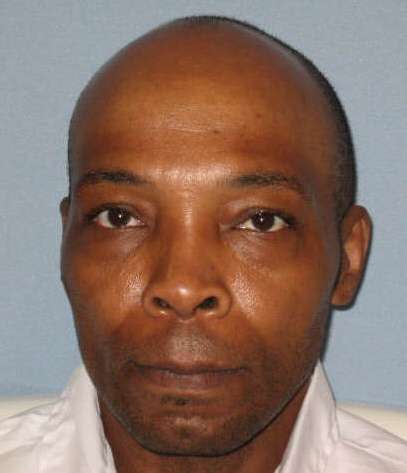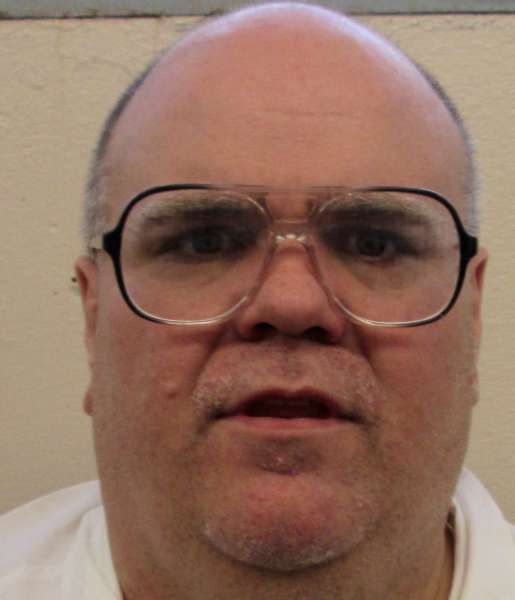Alabama Supreme Court authorizes third execution this year
The Alabama Supreme Court has approved the execution of Keith Edmund Gavin, and one other execution is pending.
If the high court approves the pending execution and all go forward, that means at least four death row inmates would be put to death this year by the state.
Gavin, 63, was sentenced to capital murder for the March 1998 killing of William Clayton Jr., a driver for a courier company. Clayton had gotten off work and drove his van to a bank in Centre, in Cherokee County, to withdraw cash to take his wife to dinner, state and federal court records show. Cherokee County is in northeast Alabama. Gavin went up to the van and shot Clayton, at least two times, then drove off in the van.
An investigator with the district attorney’s office pulled the van over, and Gavin got out and fired shots at the investigator before running into the woods. He was captured a few hours later. Clayton died at the hospital, records show.

At the time, Gavin was on parole in Illinois after being released after serving 17 years on a 34-year sentence for a murder conviction.
Gavin was convicted in November of 1999 of capital murder in Claytons’s death and the jury recommended the death penalty by a 10-2 vote. The trial judge took the recommendation and sentenced Gavin to death.
He also sentenced Gavin to life in prison for the attempted murder charge.
In Alabama, the attorney general determines which inmate on death row will next be executed. The state Supreme Court then approves the execution, and the governor then sets the date and timeline. State law holds that the execution cannot occur within 30 days of the condemned being notified of the pending execution.
The executions, if they go forward, will be in the death chamber at William C. Holman Correctional Facility in Atmore.

Jamie Ray Mills
Mills is set to be executed by lethal injection during the 30-hour period from midnight May 30 to 6 a.m. May 31.
“There is no doubt that Mills committed those offenses,” the AG’s motion to the Supreme Court states. “… Mills’ convictions and sentence are final because he has completed his direct appeal, state post-conviction review, and federal habeas review. Accordingly, it is time for this death sentence to be carried out.”
Mills and his wife, Joann, went to the home of Vera Hill, 72 and Floyd Hill, 87, in June of 2004 asking to make a phone call, court records and media accounts say. Mills was 30 at the time. Guin is in Marion County in northwest Alabama.
Afterward, the four of them went to a shed where the Hills kept items to sell as part of a yard sale, the Alabama Reflector reported.
The AG’s motion states that the women went back to the home, leaving Floyd Hill and Mills in the shed. Mills beat Hill, who fell to the ground. The women then returned to the shed and found Floyd on the ground. Mills then beat Vera on the back of the head with a hammer, as JoAnn stood in the corner.

Vera Mills died several months later from her injuries.
According to the motion, Jamie Mills then locked the shed and stole items valued at $140 from the home including a tackle box, medicines, wallet, purse and police scanner.
Mills was convicted of three counts of capital murder in August 2007 and the jury recommended the death penalty by a 11-1 vote. The trial judge took the jury’s recommendation and sentence Mills to death.
Joann Mills was convicted of murder and sentenced to life in prison.
More: Alabama executions through the years: Facts, figures and failures
Alan Eugene Miller
Miller's execution would be carried out using nitrogen hypoxia, the AG’s office says. The supreme court is yet to authorize his execution. Miller, now 59, was convicted of killing three people during a pair of 1999 workplace shootings in suburban Birmingham. He was living in Autauga County at the time.
"The State of Alabama is prepared to carry out the execution of Miller's sentence by means of nitrogen hypoxia," the attorney general's office wrote, adding that Miller has been on death row since 2000 and that it is time to carry out his sentence.

Miller was set to be executed by lethal injection in September of 2022, but staff could not gain access to his veins for the IV lines before his death warrant expired. Miller said that during the aborted 2022 lethal injection attempt, prison staff poked him with needles for over an hour as they tried to find a vein and at one point left him hanging vertically as he lay strapped to a gurney.
Miller, a delivery truck driver, was convicted in the fatal workplace shootings of Lee Holdbrooks, Scott Yancy and Terry Jarvis. Prosecutors said Miller killed Holdbrooks and Yancy at one business and then drove to another location to shoot Jarvis. Each man was shot multiple times.
Testimony indicated Miller was delusional and believed the men were spreading rumors about him. Jurors convicted Miller after 20 minutes of deliberation and then recommended a death sentence, which a judge imposed.
The state now plans to use its new nitrogen hypoxia method in its second attempt to execute Miller. In that method, the condemned breathes pure nitrogen through a mask. The nitrogen displaces the oxygen in the lungs.
On Jan. 25, Kenneth Eugene Smith became the first person in the nation executed using the method. That execution was carried out in the death chamber at the William C. Holman Correctional Facility in Atmore. In the weeks before the execution, the attorney general’s office wrote in court documents that the inmate would lose consciousness in a matter of “seconds” and die in a matter of minutes.
Smith writhed and shook on the gurney for some four minutes before appearing to lose consciousness. His convulsions shook the gurney several times. He appeared to gasp for air and writhe for about two minutes more after he appeared to lose consciousness before he apparently stopped breathing.
The morning after Smith’s execution Attorney General Steve Marshall described the execution as “textbook” and said the state was ready to carry out more nitrogen hypoxia executions.
Contact Montgomery Advertiser reporter Marty Roney at mroney@gannett.com.
This article originally appeared on Montgomery Advertiser: Alabama Supreme Court authorizes third execution this year

